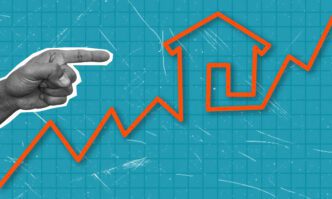Executive Summary
The Trajectory So Far
Assessing Risk and Value
Expert Predictions and Forecasts
Texas’s housing market is experiencing its lowest home turnover rate in decades, with experts citing affordability and economic uncertainty as key drivers. Across the U.S., only 28 out of every 1,000 homes changed hands in the first nine months of 2025, a rate not seen since the early 1990s, according to a new Redfin analysis. Major Texas metropolitan areas are facing even steeper declines in sales activity.
Market Slowdown Hits Texas Metros Hard
The slowdown has been particularly dramatic in Texas. San Antonio, once a magnet for out-of-state buyers, saw its turnover rate plunge nearly 27 percent year-over-year, marking the biggest drop among the nation’s 50 largest metro areas.
Dallas, Houston, and Fort Worth were not far behind, all reporting double-digit declines in sales activity. Austin also experienced a significant drop, with only 22 sales per 1,000 homes, down 15.9 percent.
Factors Driving the Decline
A primary reason for the stalled market is that many homeowners are “locked in” by historically low mortgage rates. Approximately 70 percent of U.S. homeowners currently hold mortgage rates below 5 percent, significantly lower than today’s average of about 6.2 percent.
This disparity makes it financially unfeasible for many to sell their current homes and purchase new ones at a higher borrowing cost. Affordability is another major factor, as home prices across much of Texas remain near record highs, while property taxes continue to climb.
Buyers, meanwhile, are exercising increased caution amidst economic uncertainty and persistent inflation. Chen Zhao, Redfin’s head of economics research, noted that “America’s housing market is defined right now by caution,” with buyers frequently walking away from deals or delaying their search.
Listings and Demand Dynamics
While there has been a slight increase in new listings nationwide compared to recent lows, with 39 out of every 1,000 homes listed for sale through September, this figure remains about 25 percent below pre-pandemic levels. Most homeowners who do list their properties are reportedly testing the market rather than rushing to sell.
Despite the overall caution, the National Association of Realtors reported a modest rise in existing home sales in September, up 1.5 percent from August to a seasonally adjusted annual rate of 4.06 million, the fastest pace since February. Median prices also reached a record high for September at $415,200, suggesting that declining mortgage rates and a slight inventory increase can offer temporary boosts.
Implications for the Texas Market
For Texas, the market mirrors national trends, characterized by historically low transaction volumes. According to Zhao, while Texas benefits from considerable new construction, ensuring a healthy supply of homes, the main challenge lies in weak demand.
Currently, there are approximately twice as many sellers as buyers in the Texas market, giving hesitant buyers significant leverage. This dynamic allows for negotiation on prices, requiring sellers to be realistic about their expectations.








